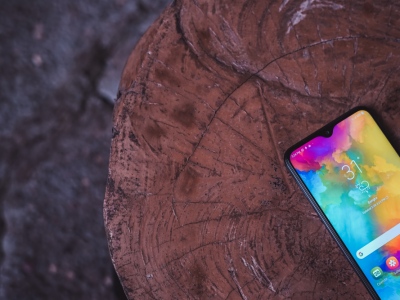
The world of car customization is a rapidly changing one, improving with every advancement in technology. One new technology just beginning to get used is the OLED, or Organic Light Emitting Diode. The OLED is made from a mixture of organic compounds that give off a colored light when excited by an electrical current. This material is sandwiched between thin films, and has no individual components like a traditional LED. This allows sheets of OLEDs to be made both super-thin and flexible. The applications are endless, and the automotive industry is just beginning to take advantage.
Think of every surface in a car that uses a display, and that can be customized, like gauges, a navigation screen or the head-unit. What do they all have in common? They’re all flat. That’s because up until now, traditional LCD displays could only be built rigid. The LCDs themselves are usually constructed behind a hard plastic or glass sheet, and they have to be illuminated by inflexible light sources. An OLED display changes all of that.
Imagine a vibrant display that was as flexible as the plastic of a 2-liter soda bottle. An entire digital instrument cluster could be built on a single display that conformed to the contours of the dashboard. Displays could begin to complement cabin design, instead of being something to design around. Auxiliary gauges for boost or oil pressure could be shaped to follow the form of the A-Pillar, instead of jutting out of it and decreasing visibility. The headliner could be replaced with a giant OLED panel that can function as a light or a video display. The possibilities for interior mods are almost endless.
It doesn’t stop there, however, because OLED applications extend to a car’s exterior. As light technology has evolved from tungsten bulb to halogen to LED, brake-light and turn signal fixtures have shrunk in size. This removes the need to alter frame design to fit a huge bulb cavity, which also frees up interior space. OLED tech can take that progression one step farther, with brake-lights only a few millimeters thin. Car designers wouldn’t have to do any more that make a shallow indentation into a body panel to fit an entire light assembly. Replacing a broken OLED taillight would be as easy as placing a sticker.
Also, a whole new world of truck accessories could emerge to custom your truck. And that same idea applies to different applications, such as advertising. Magnetic signs are a popular way for businesses to neatly apply their information on the exterior of a work vehicle. With OLEDs, they’d be able to stream videos or constantly changing text to signs that would not be any thicker than the magnets they replace.
OLED technology is just beginning to really take off, transforming cell-phone displays and televisions. It’s only a matter of time before it takes the automotive world by storm.
Author Jason Lancaster writes about auto industry news and upcoming automotive technology. He is also the founder of the Tundra Headquarters blog, a site dedicated to Toyota Tundra owners and enthusiasts.










Comments